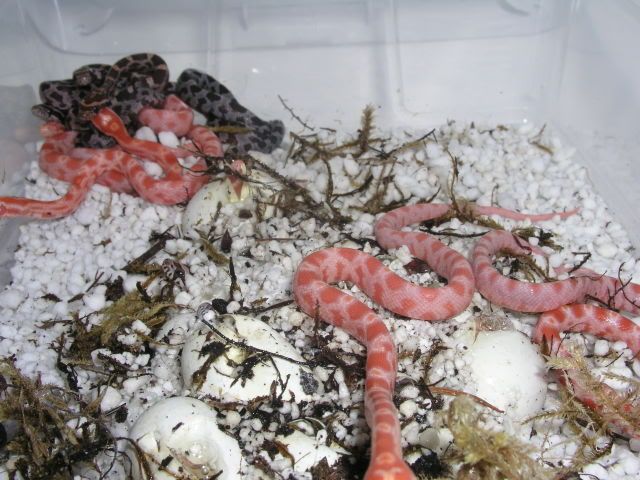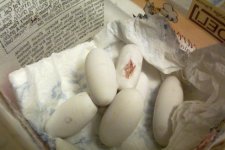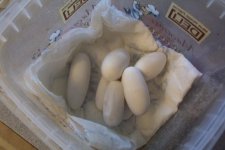El Jefe
Mark 16:18
Okay....I'm at this stage now. Set up the incubator last week and getting the supplies together for incubation. I have a few corns shed and I am expecting eggs in the next week or so.
I use sphagnum moss for the nest box in the cage and have used sphagnum moss for the incubation media as well. I've also used perlite and vermiculite and can't seem to narrow down a 'best' material.
Moss: seems to do really well at maintaining humidity but flies seem to be a problem. I wet it thoroughly and then squeeze out all water and leave it moist.
Vermiculite: like it but it dries out a little too much for me and that whole warning label of cancer also bothers me. I use a 1:1 water/material ratio (by weight) and then tweak that a little until I get it to clump together when squeeze but not poor out water.
Perlite: Nice stuff but it always looks too man-made and it always seems to look not wet enough....but I'm sure it is. I haven't used this in a while so I forget what I used to do as far as water ratio...but I believe it was 1:1 by weight.
So....what do YOU use?
AND....what kind of water/material ratio do you use? Also...do you measure by weight or some other method?
I use sphagnum moss for the nest box in the cage and have used sphagnum moss for the incubation media as well. I've also used perlite and vermiculite and can't seem to narrow down a 'best' material.
Moss: seems to do really well at maintaining humidity but flies seem to be a problem. I wet it thoroughly and then squeeze out all water and leave it moist.
Vermiculite: like it but it dries out a little too much for me and that whole warning label of cancer also bothers me. I use a 1:1 water/material ratio (by weight) and then tweak that a little until I get it to clump together when squeeze but not poor out water.
Perlite: Nice stuff but it always looks too man-made and it always seems to look not wet enough....but I'm sure it is. I haven't used this in a while so I forget what I used to do as far as water ratio...but I believe it was 1:1 by weight.
So....what do YOU use?
AND....what kind of water/material ratio do you use? Also...do you measure by weight or some other method?






